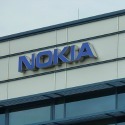
Nokia is currently eyeing constructing private wireless networks for enterprises and other organizations, an opportunity which could be twice as big as the company's current business of building wireless networks for commercial wireless network operators like AT&T and Verizon, according to CTO Marcus Weldon.
Weldon described the private wireless opportunity as "fantastic" and said the potential size of the market globally could comprise as many as 14 million base stations -- twice as many as the 7 million total base stations deployed by the world's commercial wireless network operators. However, Weldon acknowledged that the company's calculation could be a bit "hyperbolic" and that the opportunity might ultimately not grow to that size.
Nonetheless, Nokia has already deployed 30 private LTE wireless networks for enterprises and others, and he said the opportunity could represent a significant new market for the wireless network equipment vendor.
"There's this huge opportunity in local area networks," Weldon said at an investor event this week, explaining that Nokia delineates the sector between private, local networks operated by enterprises and others, and commercial, wide-area networks operated by the likes of AT&T. "The reason the enterprise or the industrial [company] wants this new network is not because they like networks, it's because they have a business problem to solve."
Weldon explained that such deployments typically involve a company adding cellular small cells to their existing enterprise WiFi network and purchasing a small packet core to handle that traffic, while routing OSS/BSS, AI and analytics operations through a secure SD-WAN connection to a cloud service. The result is a network that can handle workloads including video analytics, drone operations or robotic surveillance, providing Nokia the opportunity to become "part of that value stack."
Nokia has detailed private networks it has already built over the past few years. For example, it tested a private LTE network in the 3.5GHz CBRS band at the Santa Clara Convention Center; it teamed with Finnish operator Ukkoverkot to build a private LTE network for the Port of HaminaKotka near Helsinki; and it worked with Brazilian power company Elektro to deploy a private LTE network to track the efficiency of the electrical grid in the city of Atibaia. It's worth noting that other vendors are jumping into the space too: For example, Nokia rival Ericsson announced it would supply private LTE equipment for United Nations peacekeeping missions around the globe.
According to research firm Mobile Experts, the market for private LTE and 5G could grow at a 10% compound annual growth rate to a total of $3.4 billion by 2024.
The private wireless network sector is one that is particularly sensitive to the security concerns that have dogged China's Huawei, Weldon says. "Am I going to bet my industrial infrastructure future on some entity that perhaps I am unsure as to its allegiance, affiliation, influences?" he asked. "That's the conversation we have. And increasingly the answer we see is, not so much."
Huawei, of course, has been targeted by US officials and others as a conduit for Chinese espionage, and as a result the company has been largely banned from selling wireless networking equipment to US companies. Huawei strongly disputes those allegations; such issues haven't stopped the Chinese vendor from growing into the world's largest wireless networking equipment supplier, surpassing both Nokia and Ericsson in sales.
The 5G opportunity
During the investor event, Weldon was also questioned about Nokia's 5G business. He didn't directly respond to a question about whether Nokia is losing market share to the likes of Huawei and Ericsson, but argued instead that "we're all winning in different ways" and that "we're all in the race, and none of us has beaten any of the others in any meaningful way."
Weldon argued that Ericsson may excel in some areas of wireless networking while Nokia excels in others, but that none of the market's players currently enjoy a commanding lead in the space in terms of sales or technological prowess.
However, he argued that the 5G sales cycle could last up to a decade, and that Nokia would eventually gain the upper hand on its competitors because it offers an "end-to-end" solution.
— Mike Dano, Editorial Director, 5G & Mobile Strategies, Light Reading | @mikeddano
About the Author(s)
You May Also Like











